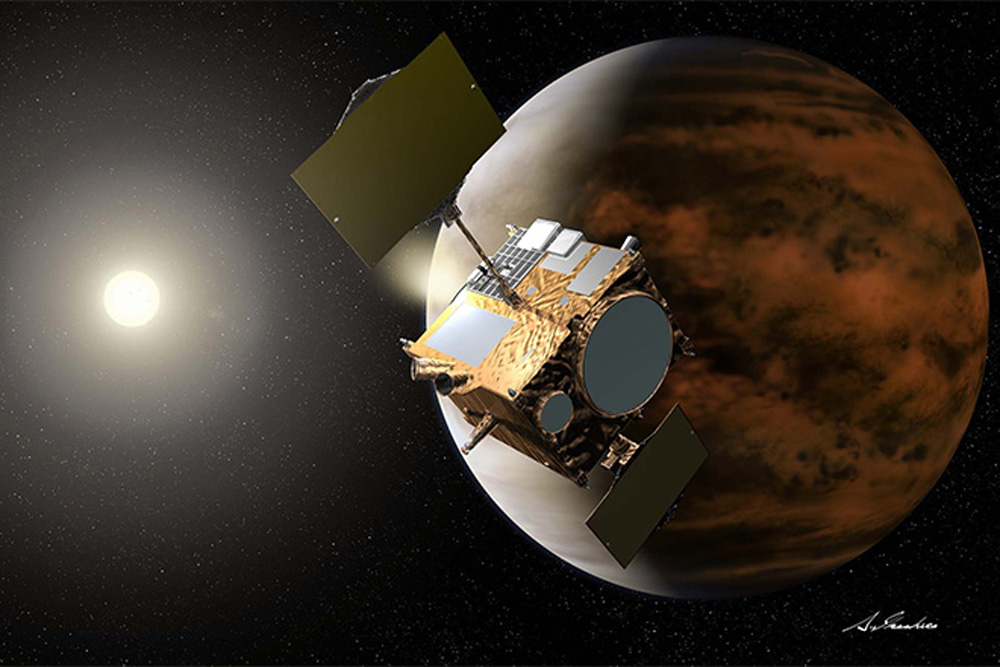Powerful GOES-R Satellite to Map Earth's Lightning and Much More

A new environmental-monitoring satellite poised to launch into space on Saturday (Nov. 19) will fly a lightning mapper higher than ever before, allowing for better severe-storm monitoring across the United States and in nearby regions, NASA officials said.
Flashes, storm updrafts and more will be visible in the instrument on the Geostationary Operational Environmental Satellite R satellite (GOES-R), which is expected to launch Saturday at 5:42 p.m. EST (2242 GMT). You can watch the launch live on Space.com, courtesy of NASA TV.
"It really helps the forecaster with what is called situational awareness," said Steven Goodman, GOES-R program scientist for the National Oceanic and Atmospheric Administration (NOAA), in a press conference on NASA TV Thursday (Nov. 17). [GOES-R: A Powerful Weather Satellite in Pictures]
Goodman explained that a typical forecaster may be looking at 20 storms at the same time, so the instrument could help that person find the storm with the most potential for damage. "They can get a diagnostic to get a warning out early," he said.
Watching electrification
While lightning mappers have flown before in space, they have only been in low Earth orbit, Goodman said. The aim is to build on 17 years of data from the Tropical Rainfall Measuring Mission, which ended last year. If GOES-R lasts long enough to bring the total stretch of lightning data collection to 30 years (between the two missions), then that would be good information to make climate predictions, he added.
The GOES-R instrument, called the Geostationary Lightning Mapper, is supposed to watch lightning around the Americas and nearby oceans to a resolution of about 6.2 miles (10 kilometers). This would include cloud-to-cloud lightning, in-cloud lightning and cloud-to-ground lightning. The project has been in development since 1979. [Amazing Photos of Lighting from Space]
Scientists consider lightning an indication of storm updraft. As precipitation rises in a cloud, it freezes and produces ice particles, soft hail and other low-temperature kinds of precipitation. And as different types of icy precipitation collide in the cloud, the ice crystals become positively charged and the soft hail negatively charged, according to the National Weather Service. This produces electrification, a key process behind lightning.
Breaking space news, the latest updates on rocket launches, skywatching events and more!
An advanced baseline imager will supplement the satellite's lightning data, providing information five times faster than other GOES satellites. It will look at Earth in 16 different spectral bands (11 more than the current GOES series) to provide information on weather, climate and natural hazards.
This Earth monitoring "is a game changer for weather forecasters for our nation, Latin America and the Caribbean," said Sandra Cauffman, deputy director of NASA's Earth Science Division, in the same press conference. Among other things, forecasters are hoping to improve the accuracy of evacuations, officials added, because once an evacuation is called, it can't be reversed.
Spying on the sun
GOES-R will watch not only the Earth, but also the sun's environment. The major driver of energy on Earth, the sun can sometimes belch out devastating coronal mass ejections. These streams of particles occasionally short out infrastructure as they strike satellites or power lines.
The satellite will monitor solar flares— and the influence of the sun's electromagnetic radiation in the Earth's upper atmosphere — using the Extreme Ultraviolet and X-ray Irradiance Sensors. GOES-R will also carry a telescope that can monitor the sun in extreme ultraviolet wavelengths. The telescope will help with estimating temperatures of the sun's corona (upper atmosphere), which in turn will help forecasters predict when the sun is most likely to erupt.
During solar events, GOES-R will predict the flux of charged particles near Earth, using the Space Environment In-Situ Suite instrument and a magnetometer. This will help with radiation predictions for astronauts as well as satellites, according to a mission description.
While GOES-R will monitor radiation, the satellite could also be vulnerable to these high-energy particles. The lightning mapper depends on a charged-coupled device, which could see some pixels on the detector go dark if high-energy particles damage the instrument, Goodman said. He also described the solar ultraviolet imager as "touchy" and particularly sensitive to water, so it will be important to avoid contamination for this device to work properly.
GOES-R will be renamed GOES-16 when it goes to geostationary orbit. The satellite will do a checkout and validation phase of about one year, and then will begin operations. Its final orbit will be decided at that time, after NOAA looks at the health of other GOES satellites.
Follow Elizabeth Howell @howellspace, or Space.com @Spacedotcom. We're also on Facebookand Google+.Original article on Space.com.
Join our Space Forums to keep talking space on the latest missions, night sky and more! And if you have a news tip, correction or comment, let us know at: community@space.com.

Elizabeth Howell (she/her), Ph.D., was a staff writer in the spaceflight channel between 2022 and 2024 specializing in Canadian space news. She was contributing writer for Space.com for 10 years from 2012 to 2024. Elizabeth's reporting includes multiple exclusives with the White House, leading world coverage about a lost-and-found space tomato on the International Space Station, witnessing five human spaceflight launches on two continents, flying parabolic, working inside a spacesuit, and participating in a simulated Mars mission. Her latest book, "Why Am I Taller?" (ECW Press, 2022) is co-written with astronaut Dave Williams.

